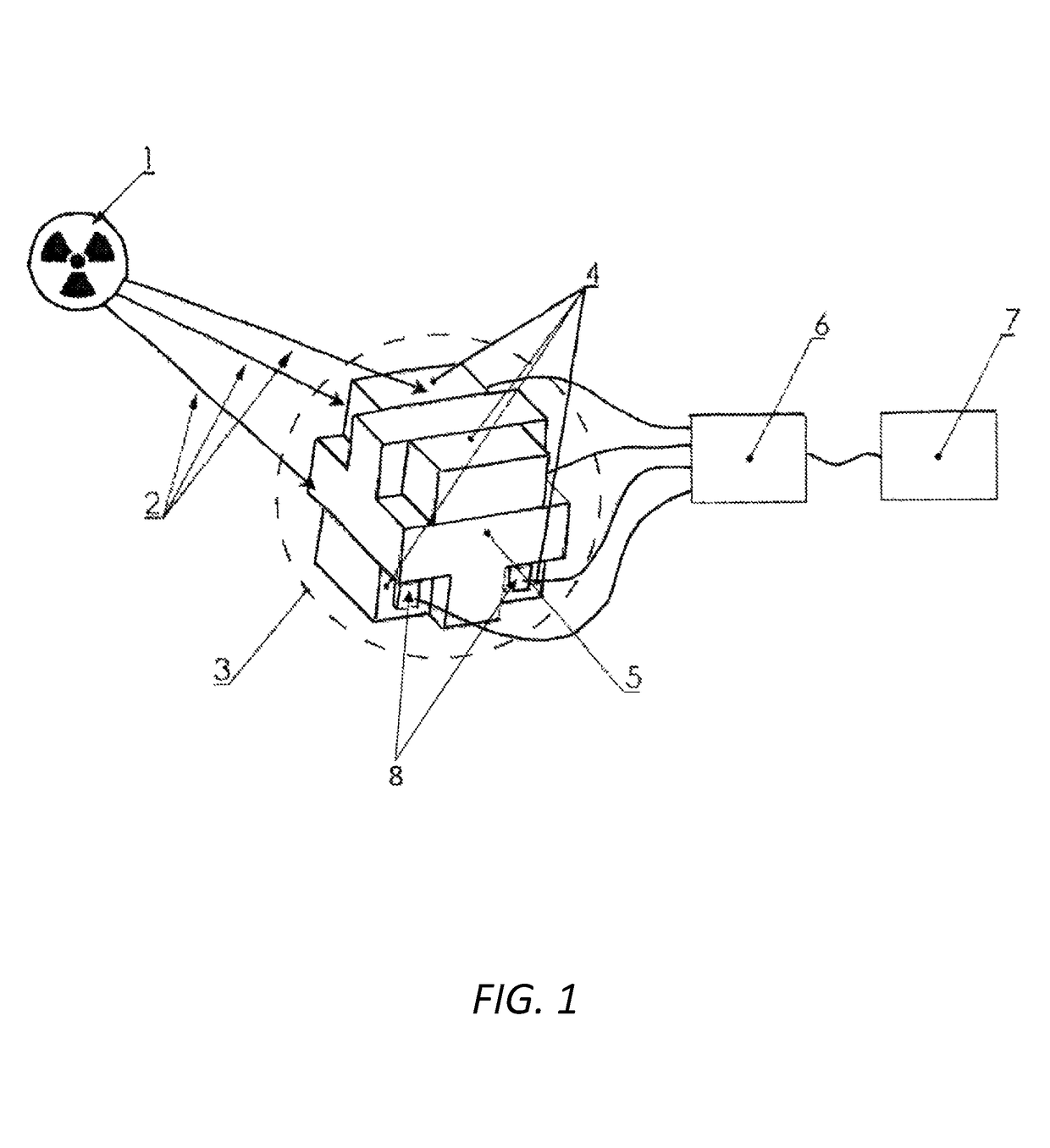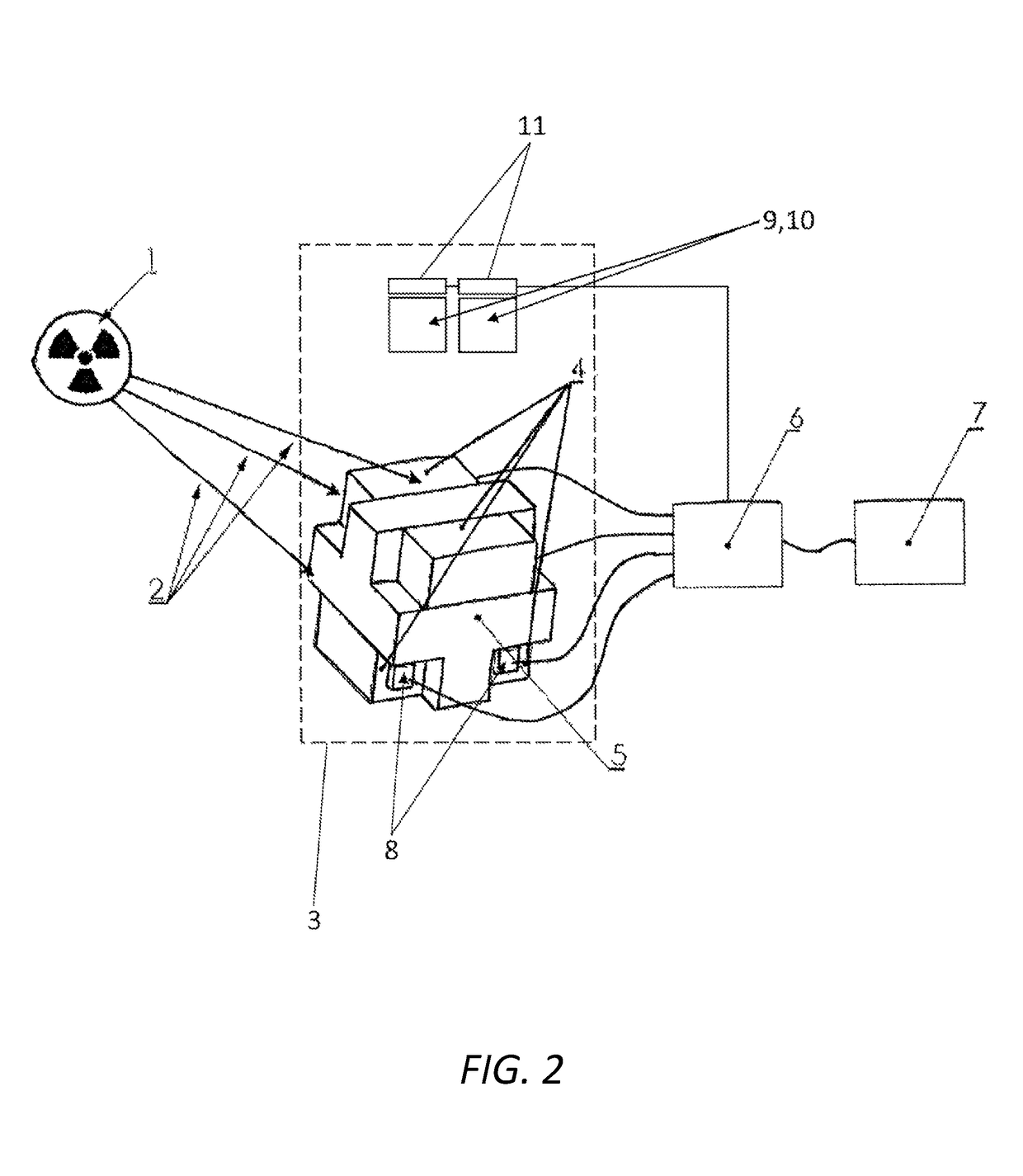Device and method for the location and identification of a radiation source
a technology for identifying and locating radiation sources, which is applied in the direction of x/gamma/cosmic radiation measurement, measurement with semiconductor devices, instruments, etc., can solve the problems of difficult to locate and identify unknown sources of radiation, complex and bulky devices utilizing many radiation detection crystals, and inability to provide 4pi triangulation
- Summary
- Abstract
- Description
- Claims
- Application Information
AI Technical Summary
Benefits of technology
Problems solved by technology
Method used
Image
Examples
Embodiment Construction
[0017]Again, the handheld device for the location and identification of a radiation source of the present invention combines a handheld “hot spot” locator with the capability to discriminate between fissile and non-fissile materials through the use of one or more additional solid state gamma detection crystals, gamma spectroscopy crystals, neutron detection crystals, and / or photodetectors.
[0018]Referring now specifically to FIG. 1, in one exemplary embodiment, the “hot spot” locator (described in detail in SL 24520 to Petrovic, incorporated in full by reference herein) locates a radiation source 1 emitting gamma radiation 2 towards the locator via a gamma radiation transparent housing 3 encompassing a plurality of gamma detection crystals 4. As is shown, four low resolution pillar shaped crystals 4 (2×2×10 cm each, for example) are disposed at the opposed edges of a cube structure with a lead cross structure 5 filling the spaces between them, such that all directions are simultaneou...
PUM
 Login to View More
Login to View More Abstract
Description
Claims
Application Information
 Login to View More
Login to View More - R&D
- Intellectual Property
- Life Sciences
- Materials
- Tech Scout
- Unparalleled Data Quality
- Higher Quality Content
- 60% Fewer Hallucinations
Browse by: Latest US Patents, China's latest patents, Technical Efficacy Thesaurus, Application Domain, Technology Topic, Popular Technical Reports.
© 2025 PatSnap. All rights reserved.Legal|Privacy policy|Modern Slavery Act Transparency Statement|Sitemap|About US| Contact US: help@patsnap.com


